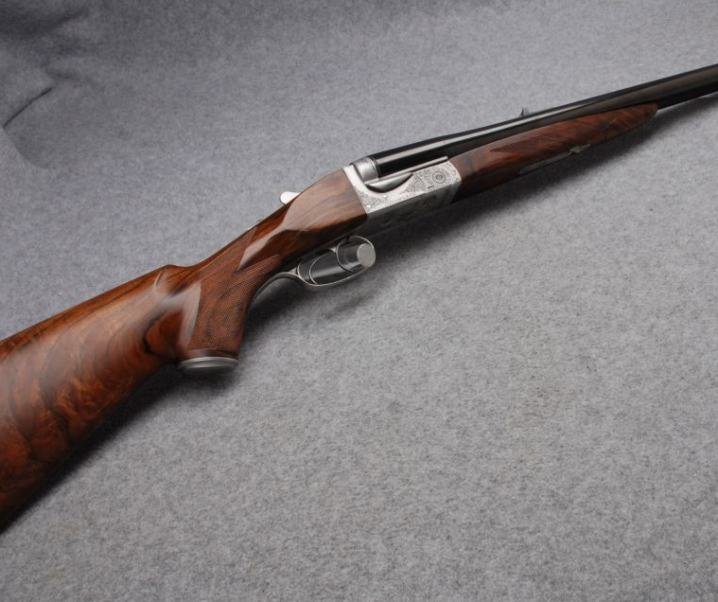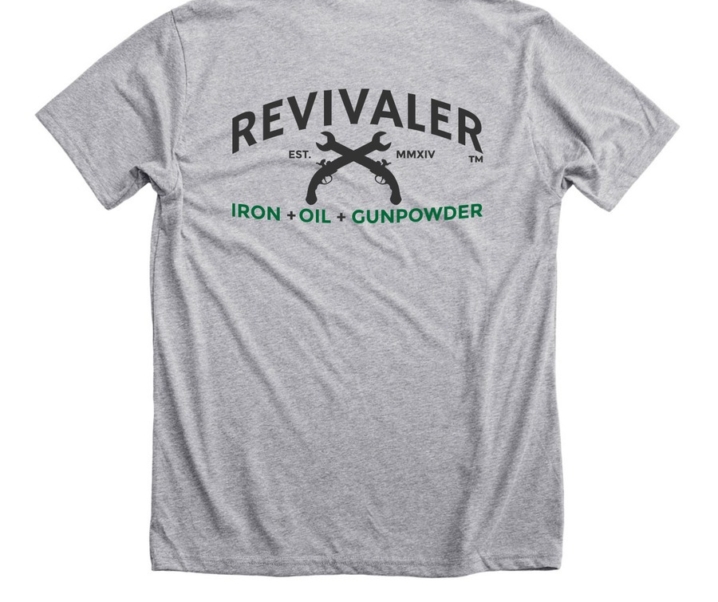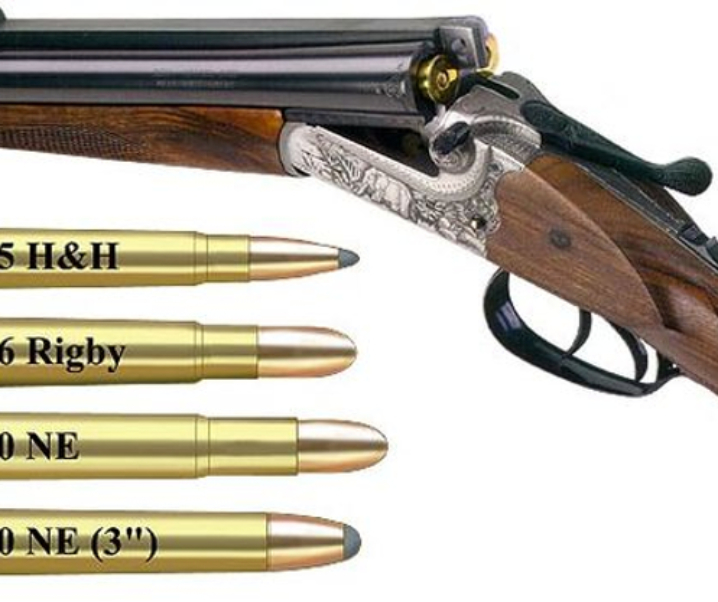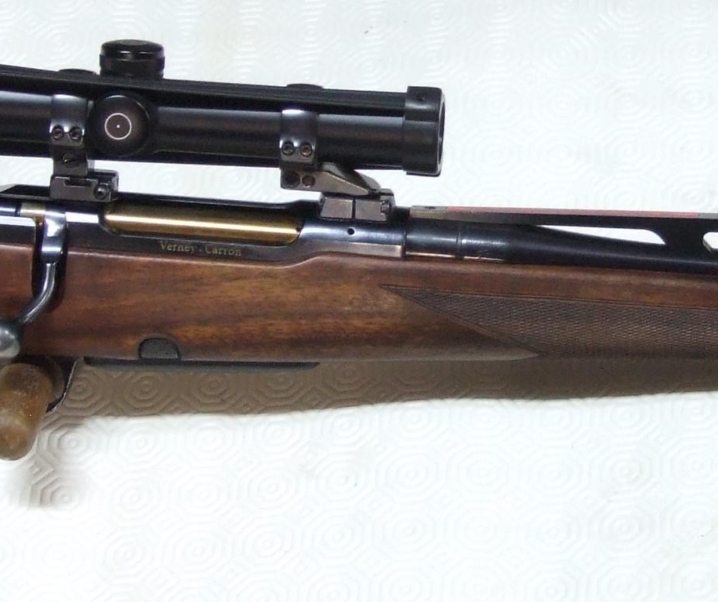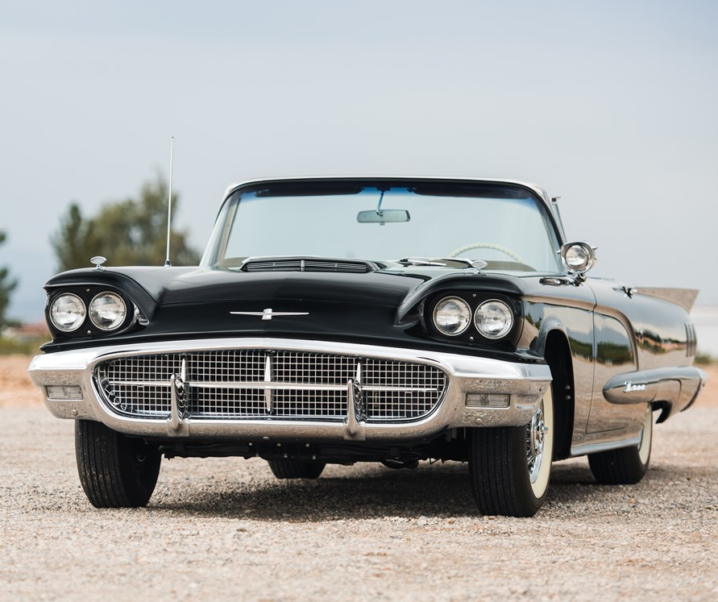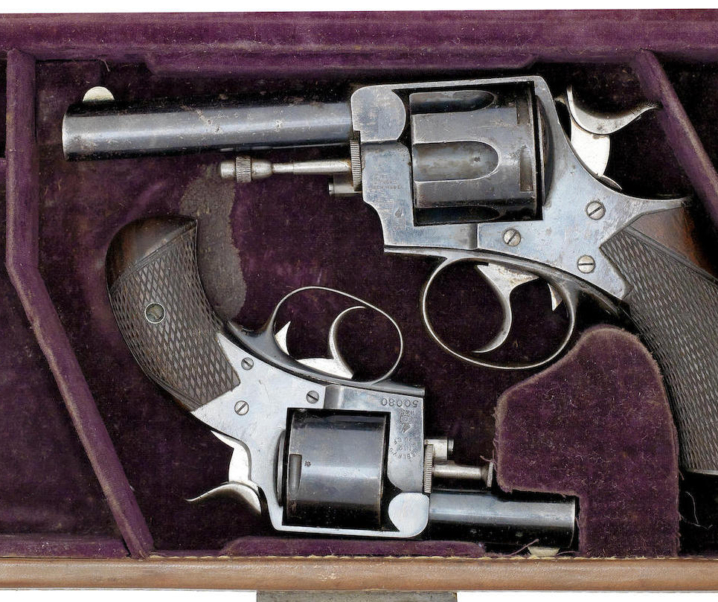The 30-30 Winchester sporting rifle cartridge is as American as Apple Pie: even today this is still the most famous cartridge for lever action deer rifles with many 30-30 rifles having been passed down in families from father to son or daughter, through the generations.
It is an American icon, nothing short of a cultural tradition.
In this article we look at the history of the cartridge and the rifles that were made for it. Then we look at the current ammunition offerings and the rifles being made in this caliber today.
Fast Facts
- When the cartridge that we nowadays know as the “30-30 Winchester” was first introduced it was named the .30 W.C.F. (Winchester Center Fire).
- The 30-30 was based on the 38-55 Winchester black powder cartridge which was at that time chambered in the Winchester Model 94.
- The 30-30 was made by the simple process of necking down the 38-55 to take .308″ bullets with a charge of 30 grains of a DuPont smokeless nitro powder.
- The 30-30 was never a black powder cartridge.
- Winchester designed the 30-30 specifically for their Model 94 lever action rifle.
- The cartridge has proved to be amazingly popular and both rifles and factory ammunition are in production to the present day.
History
The 30-30 Winchester was created around the same time that the US Army was in the process of adopting the 30-40 Krag military cartridge and the Krag-Jørgensen rifle. Work on the cartridge that would become Winchester’s 30-30 began in 1891.
The 30-40 Krag cartridge was introduced in 1892 and has the distinction of having not been loaded with black powder, but which used smokeless powder from the outset. The 30-30 Winchester followed suit.
This old style naming system was a carryover from the black powder days when, in the United States, it was common practice to name a cartridge by its bullet calibre, followed by the charge of powder in the cartridge case.
Winchester wanted to create this new high velocity smokeless powder .30″ caliber cartridge for use in their John Moses Browning designed Model 94 lever action rifle, and as the foundational cartridge case they chose the black powder 38-55, which had been introduced in 1876, and necked it down to take a .308″ diameter bullet.
The Winchester Model 94 was first chambered for the 38-55 and the 32-40 black powder cartridges, (which both share the same rim diameter) and so when Winchester wanted to create their first small-bore nitro powder cartridge and feature it in their Model 94 it made perfect sense to base that new 30-30 cartridge on the 38-55 for which the Model 94 was already configured.
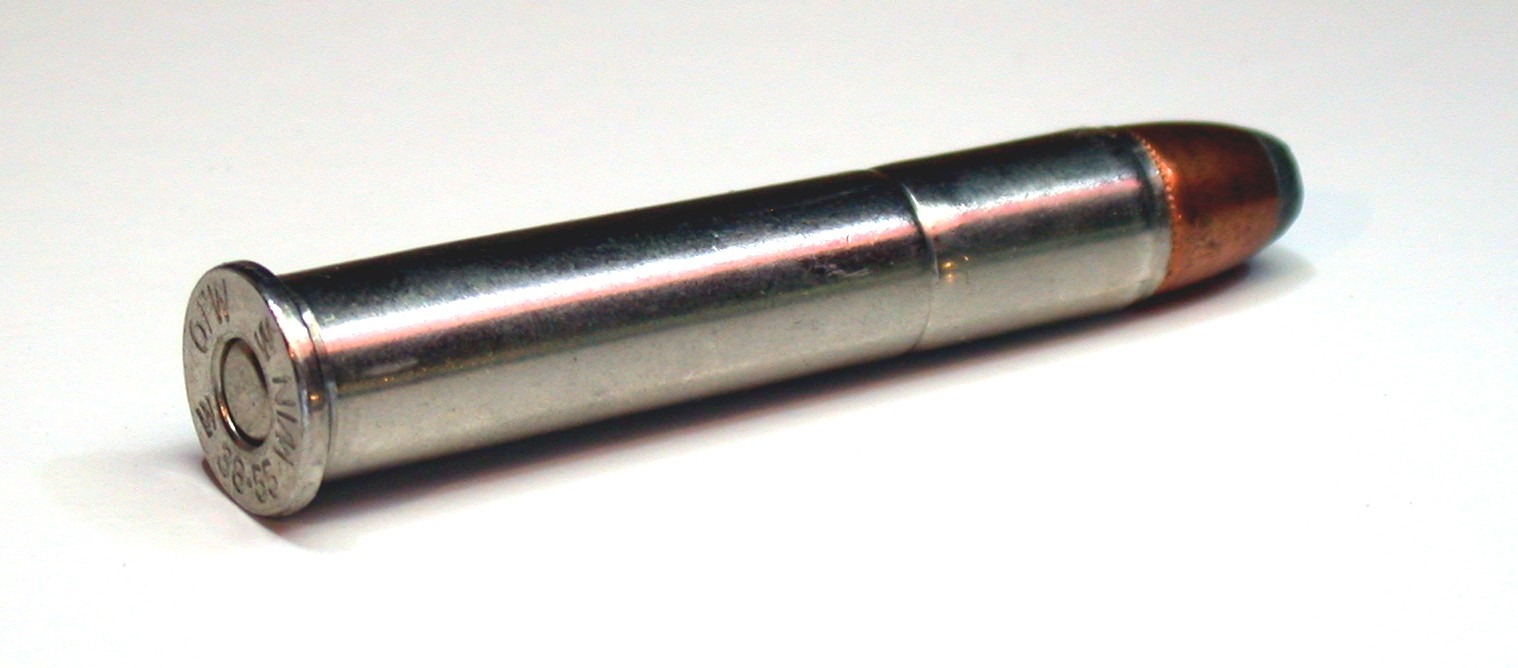
When it was first introduced in August of 1895 this new cartridge was named the “.30 Winchester Smokeless” and the cartridge head-stamp was “.30 W.C.F.” (the W.C.F. standing for Winchester Center Fire).
These early cartridges used a Winchester #5 “protected primer” and were loaded with a 160 grain lead core “metal patched” (i.e. jacketed) round nose bullet with the cartridge case charged with 30 grains of a stick like nitro powder which had been made by DuPont. Advertised velocity for this cartridge was 1,970fps from a 26 inch barrel.
Winchester intended this to be a sporting rifle cartridge from the outset and designed it to be primarily a deer rifle cartridge, with US species such as the whitetail deer in mind. It was made to be used in the lightweight Model 94 lever action rifle, to have mild recoil and report, and to be easy to carry and easy to shoot accurately.
John Moses Browning was very much interested in sporting arms and he understood what a deer rifle needed to be. Even today it is hard to find fault with his Model 94 Winchester rifle for whitetail deer in the woods. It is shaped to be comfortable to carry, and it can weigh as little as six and a half pounds. No wonder it has survived and prospered through to the present day.
The lever action was very much the American rifle, with a tube magazine that could be conveniently topped up via the loading gate on the right side of the action.
We should note that at this early stage the cartridge was not yet named the “30-30”, it would be the intervention of another rifle maker that would coin the name by which the cartridge would come to be universally known.
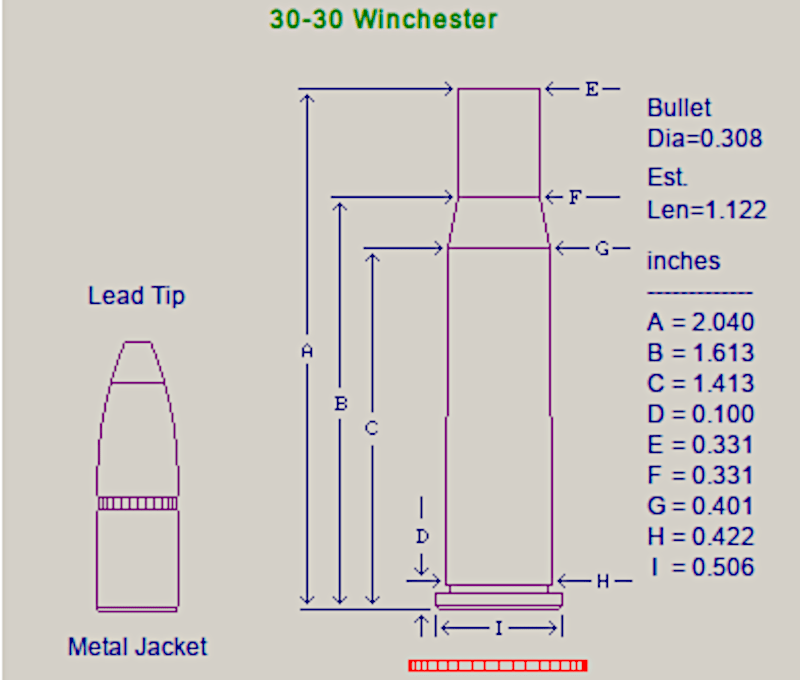
Winchester’s main rival in the production of lever action rifles at this time was Marlin, and the folks at Marlin saw the Winchester Model 94 and its high velocity small bore cartridge that was just perfect for putting whitetail venison on the table and they must have thought it to be a rather sensible idea: indeed it may have been something their engineers had already considered but hadn’t acted on yet.
Marlin’s engineers had their Model 1893 lever action that would be just perfect for the new .30 Winchester Smokeless cartridge. But of course Marlin were not going to put the “Winchester” name on the barrel of their rifles designating the caliber, so they approached the Union Metallic Cartridge Company of Bridgeport, Connecticut, and got them to duplicate the specifications of the .30 Winchester.
The idea of necking down the 38-55 to .30″ caliber and using smokeless powder was not particularly radical or innovative. It was simply a common sense technical development, and it made perfect sense for Marlin to do that.
These early U.M.C. 30-30 cartridges were loaded with 160 grain jacketed round nose soft point bullets just like the W.R.A. ammunition, but it would be Marlin who first offered the 170 grain soft point bullet loading with Winchester following suit in 1903. It would be the 170 grain bullet that would become the standard, most likely because of its high sectional density and excellent penetration.
A difference between the U.M.C loaded and W.R.A. cartridges was that the U.M.C. used a small rifle primer while the W.R.A. had a “Protected Primer”. In 1910 U.M.C. changed to a large rifle primer, and then in 1920 Winchester changed to a non-fulminate large rifle primer.
These were the days when the corrosive mercury fulminate primers were the norm, but the advent of non-corrosive primers, typically using lead styphnate, were a boon to hunters and soldiers alike.

With that done the naming part was easy, .30″ caliber bullet with 30 grains of smokeless powder in the cartridge case, so they dubbed it the “30-30”. The Union Metallic Cartridge Company cartridges were head-stamped “U.M.C. / 30-30 S”. The “S” presumably standing for “Sporting” (the “S” was subsequently dropped from the head-stamp).
The name “30-30” would be the one that stuck and it is the name by which the cartridge is known nowadays.
A curious but clever light loading was offered by Winchester for their 30 W.C.F (i.e. 30-30) rifles. This light load cartridge was called the .30 W.C.F. “Short Range” (aka “.30-6-100”) and it was loaded with a 100 grain .30 caliber lead bullet with just 6 grains of powder in the case.
The intention of this loading was to enable the rifle owner to adapt his/her rifle to harvesting small game such as turkey, at low cost and with minimal meat damage.
Ammunition and Performance
The 30-30 Winchester has been loaded with a wide variety of bullets even down to the Remington Sabot ammunition which sat a 55 grain .224″ bullet in a .30″ caliber plastic sabot in an attempt to make it a small game/varmint rifle. The idea sort of worked, but the accuracy, or rather lack thereof, killed the idea off.
Nowadays the two common loadings for the 30-30 hover around the original 160 grain of 1895. The 170 grain has tended to be the workhorse bullet weight, but a 150 grain is also offered which manages a higher velocity.
Here are some of the current (2024) listings in US catalogs of major manufacturers to provide an overview of the sort of loadings that are currently available.
2024 Winchester Catalog
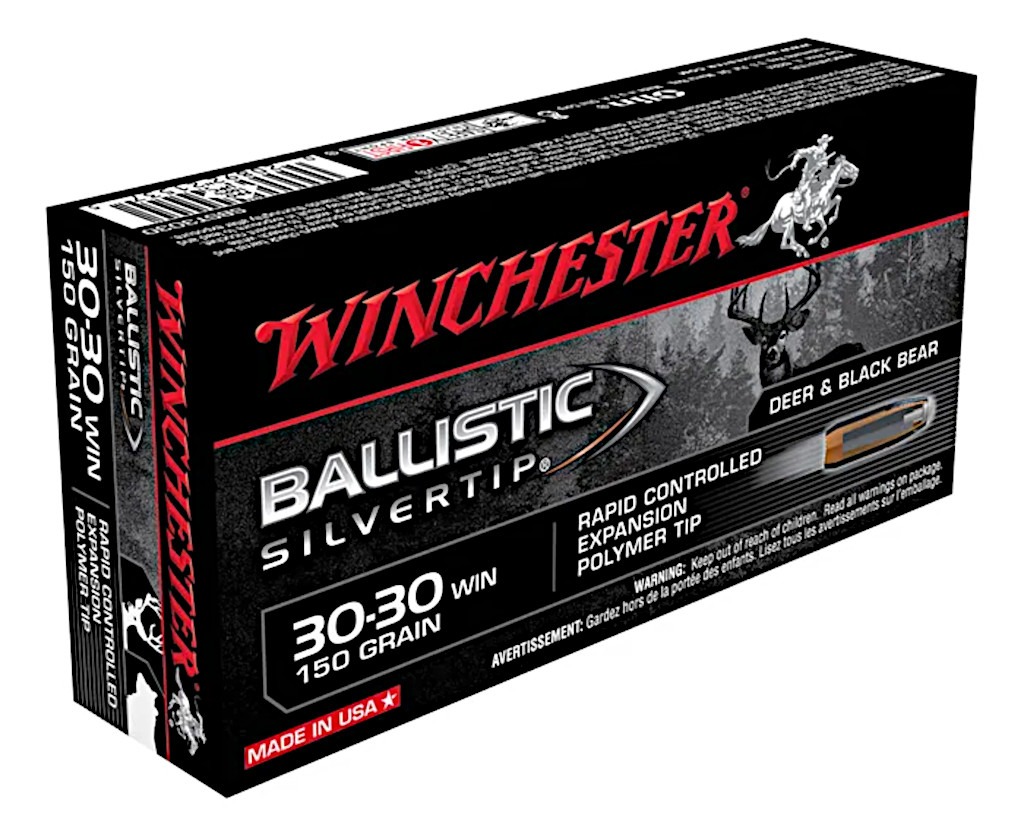
Winchester’s four loadings for the 30-30 Winchester include the 150 grain and 170 grain full power loads that are a standard for the cartridge, along with a reduced velocity “Deer Season” load that should minimize meat damage on the small Whitetail deer species. In addition to this is a full power 150 grain Hollow Point load for more rapid expansion and less penetration where wanted.
- 150 grain Ballistic Silvertip (BC .232) @ 2,390 fps with 1,902 ft/lb energy
- 150 grain Deer Season XP (BC .215P @ 2,165 fps with 1,792 ft/lb energy
- 150 grain Super X (Hollow Point) (BC .218) @ 2,390 fps with 1,902 ft/lb energy
- 170 grain Power Point (BC .241) @ 2,200 fps with 1,827 ft/lb energy.
As can be seen there are three 150 grain offerings and only one 170 grain. Why might it be that the 150 grain offerings appear to be more popular? I suspect that the modern generation of shooters tend to be rather more mathematics inclined than their parents and grandparents and have access to computers and ballistics software.
But the math can give deceptive impressions. Energy for example is heavily dependent on velocity, the velocity component of the calculation is squared and that can skew the impression a shooter gets as to the actual power of the cartridge loading.
There are a few factors other than velocity and energy to consider, among these are bullet design and sectional density – which will determine how the bullet imparts its power and how well it penetrates – and momentum.
The momentum figure is expressed in lb/sec and it is expressed in simple terms as mass multiplied by velocity.
So, as an example, the 150 grain Ballistic Silvertip in the above list has a muzzle energy of 1,902 ft/lb, and a momentum of 51.2 lb/sec.
By comparison the 170 grain Power Point has a muzzle energy of 1,827 ft/lb but a momentum of 53.4 lb/sec and with its higher ballistic coefficient it holds onto its power a bit better than its sibling as it travels downrange. So the 170 grain bullet actually has an advantage over the higher velocity lighter 150 grain bullet despite its calculated energy being a bit lower.
Back in the early years when the 30-30 was created I suspect that both Winchester and Marlin figured those things out – even though they didn’t have computers – and that was why they increased the bullet weight from 160 grain to 170 grain very early on.
2024 Remington Catalog
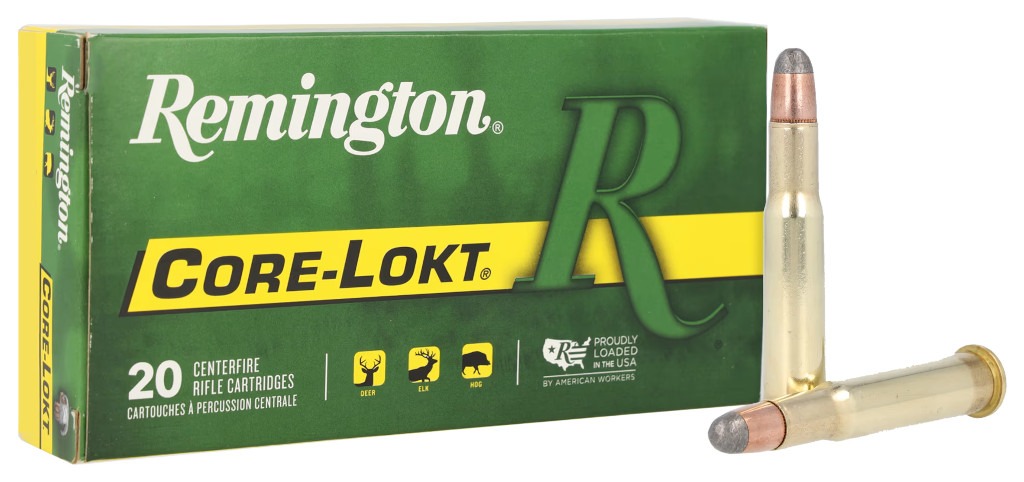
Remington load both 150 grain and 170 grain with their CoreLokt bullets. Remington choose to load a 170 grain Hollow Point and add to their offerings a reduced power moderate velocity 125 grain CoreLokt loading.
- 150 grain CoreLokt (BC .193) @ 2,390 fps with 1,902 ft/lb energy
- 125 grain CoreLokt (BC .215) @ 2,175 fps with 1,313 ft/lb energy
- 170 grain CoreLokt Soft Point (BC .254) @ 2,200 fps with 1,827 ft/lb energy
- 170 grain CoreLokt Hollow Point (BC .254) @ 2.200 fps with 1,827 ft/lb energy
2024 Hornady Catalog
The Hornady line-up is quite creative and includes their new MonoFlex bullet which has a soft plastic tip to boost the ballistic coefficient while remaining safe in the tube magazines of the majority of 30-30 rifles.

The Sub X is a sub-sonic cartridge that produces very similar performance to the .300 Blackout and is suitable for use with a sound moderator/supressor, or for a non-suppressed rifle when you just need something reasonably quiet if you are for example harvesting some venison in an area where you want to avoid disturbing the neighbors.
The Sub X ammunition opens up a new dimension for 30-30 owners who don’t reload their own ammunition.
- 140 grain MonoFlex (BC .285) @ 2,465 fps with 1,889 ft/lb energy
- 150 grain Round Nose (BC .193) @ 2,390 fps with 1,902 ft/lb energy
- 160 grain FTX (BC .330) @ 2,400 fps with 2,046 ft/lb energy
- 175 grain Sub X (BC .300) @ 1,050 fps with 428 ft/lb energy
2024 Federal Catalog
Federal’s catalog lists just two loads for the 30-30 Winchester, both of them about as traditional as one could think of. Traditional in my book translates as “tried and true” and these loads look to be just that.
- 150 grain SPFN (BC .219) @ 2,390 fps with 1,903 ft/lb energy
- 170 grain SPRN (BC .254) @ 2,200 fps with 1,827 ft/lb energy
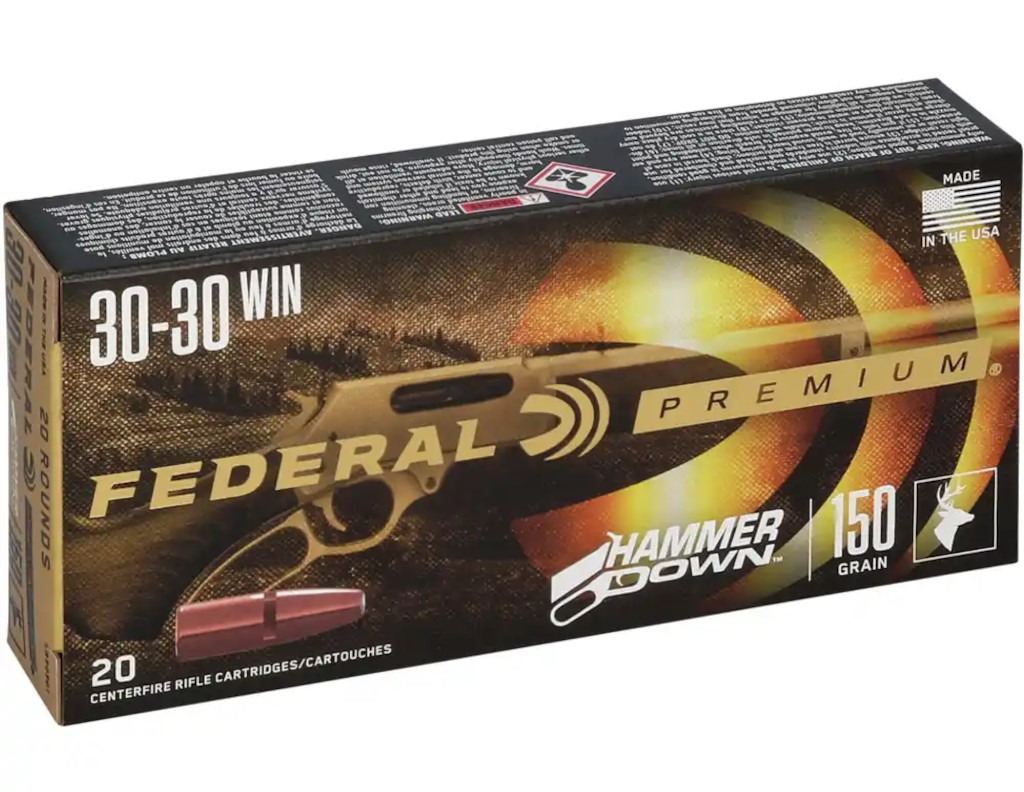
2024 Barnes Catalog
Barnes are one of the most famous of the makers of solid copper bullets and in recent years they have ventured into ammunition production.
For 2024 Barnes have announced a new line of ammunition called “Barnes Pioneer” intended for lever action rifles with tube magazines.
For 2024 they list two loading for the 30-30:-
- 150 grain TSX FN with a muzzle velocity of 2,335 fps and energy of 1,816 ft/lb.
- 190 grain Barnes Original
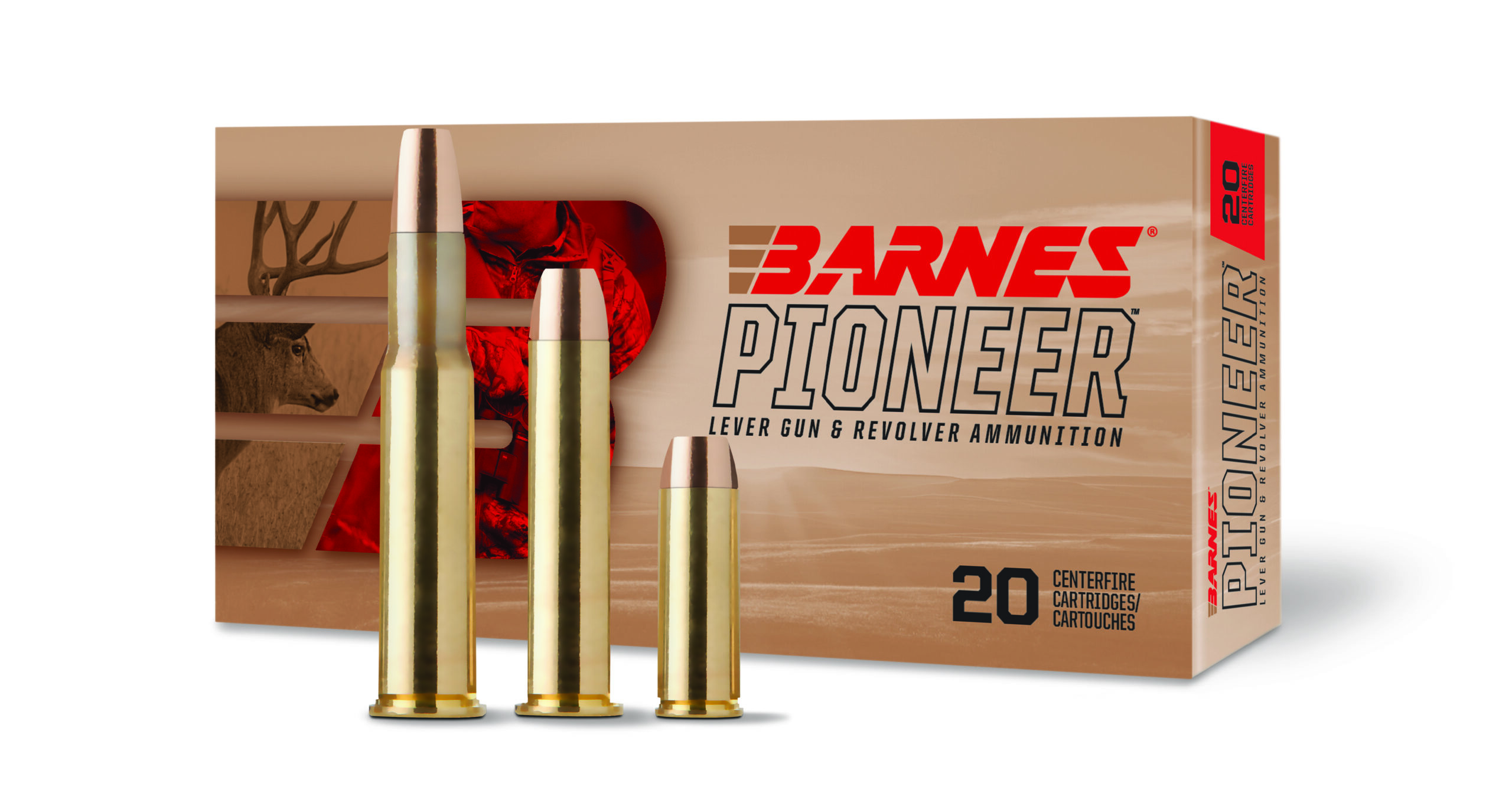
Rifles for the 30-30 Winchester
The 30-30 Winchester is still a popular cartridge and quite a number of manufacturers make rifles for it, both in the United States and overseas. Although it was originally created for lever action rifles with a tube magazine the 30-30 has been chambered in break-action single-shot rifles, the Ruger No.3, and a few bolt action rifles including the Winchester Model 54, which was the predecessor of the Winchester Model 70.
Most sources don’t mention that there were in fact special order Winchester Model 70 rifles made by Winchester chambered for the 30-30. In Roger Rule’s definitive book on the Model 70 “The Rifleman’s Rifle” he includes a description of special order rifles and includes pictures of one in .30 W.C.F. (i.e. 30-30 Winchester) from his own collection on page 265.
So there may not have been many made, but the Winchester factory did indeed make some Model 70’s in .30 W.C.F. to special order.
Here are a few of the 30-30 rifles in current production at time of writing.
Winchester
The 30-30 was originally created for the Winchester Model 94: in fact the cartridge has become pretty much synonymous with the M1894.
Winchester’s Model 94 is still in production and five versions are on offer:-
- Model 94 carbine: 20 inch barrel, blued steel carbine strap buttplate. Marble Arms front sight and adjustable buckhorn rear sight. Grade 1 wood stock and fore-end.
- Model 94 Short Rifle: 20 inch barrel, forearm cap and shotgun-style buttplate. Drilled and tapped for optical sight mounts. Grade 1 wood.
- Model 94 Trails End Take Down: quick takedown Model 94 lever-action rifle designed for compact carry in a pack or case. Marble Arms front sight and adjustable semi-buckhorn rear sight. Drilled and tapped for optic sight mounts. Grade 1 wood.
- Model 94 Deluxe Sporting: Grade V/VI checkered walnut stock. Steel receiver with color case hardened finish, drilled and tapped for rifle-scope mounts. 24 inch button rifled barrel with semi-gloss blued finish. Drilled and tapped hammer for hammer spur extension, semi-buckhorn rear sight, Marble Arms gold bead front sight.
- Model 94 Sporter: 24 inch barrel, straight grip, blued steel crescent buttplate, drilled and tapped for optic sight mounts, Grade 1 wood.

At the time of writing the prices of these rifles varies from $1,199.99 for the Model 94 carbine up to $2,229.99 for the utterly gorgeous Model 94 Deluxe Sporting. Each of the links above will take you to the page on the Winchester website with complete details about each rifle.
Winchester offers a strong and traditional line-up of Model 94 rifles.
Marlin
Marlin Firearms has had a bit of a troubled history in recent years, having been taken over by Remington, and more recently by Ruger. It is good to see this company that has been such an integral part of United States firearms history still in production.
Ruger have an excellent reputation and we hope their stewardship of Marlin will prove to be a great boon to the company, and to all the Marlin enthusiasts out there both in the United States and elsewhere.
Back when Marlins were being made by Remington they were dubbed “Remlins”: I wonder if the Marlins made by Ruger will come to be dubbed “Ruglins”.
The Marlin 336 chambered for the 30-30 comes in four model series:
- The SBL Series: These rifles are of stainless steel with a gray laminate stock and have a threaded barrel. Front sight is fiber optic and the rear ghost ring peep is tritium equipped.
- The Dark Series: These rifles have a a nylon-reinforced polymer stock with M-LOK® attachment slots. The front site is fiber optic and there is a tritium ring peep rear sight.
- The Classic Series: The Classic Series rifles are shamelessly traditional, the sort of rifles I tend to buy and delight in. They feature an American Black Walnut stock and fore-end. The fore-end and pistol grip are traditionally checkered while the alloy steel receiver and barrel are blued with a satin finish. The open sights are traditional with a semi-buckhorn rear sight.
- The Trapper Series: The Trapper Series rifles are stainless steel with dull gray laminated stock and feature Skinner sights with a ghost ring rear and “Bear Buster” front.
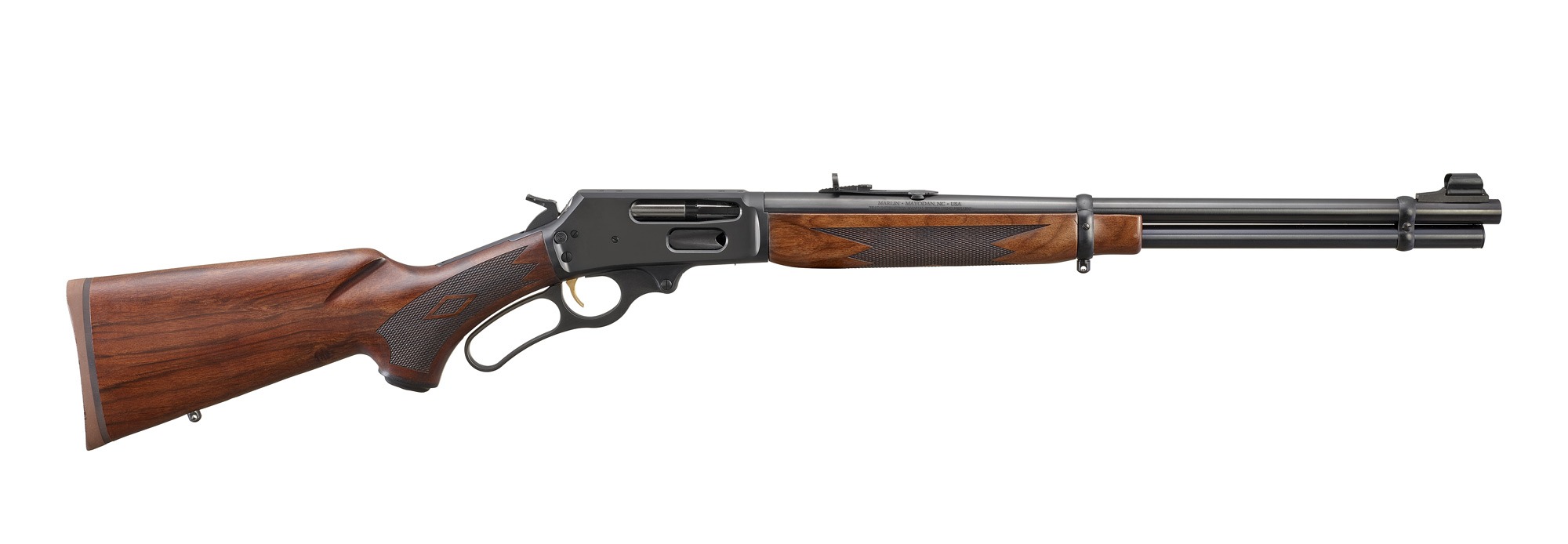
Looking at these different series that Marlin are offering it seems clear that they are sensibly testing the marketplace to find out what lever action buyers are looking for.
Henry
Henry are a fairly new company who have acquired a reputation for excellence in both design and quality control. They offer two styles of rifle chambered for the 30-30, their large frame lever action rifles, and their break action single shot rifle.
The Henry Large Frame Lever Action comes in a range of models in 30-30, some with brass frames, some with steel.
- Side Gate Lever Action: brass frame, American walnut wood stock with engraved panels.
- Steel Lever Action 30-30: steel frame, checkered American walnut wood stock. Available with standard or large loop lever.
- Color Case Hardened Lever Action: steel color case hardened frame, checked American walnut wood stock. Straight-wrist stock on the 30-30.
- Steel Wildlife Edition: essentially a steel lever action with a wildlife oriented engraving and feature inlay.
- All-Weather Lever Action: this rifle has a steel hard chromed receiver and barrel and dark stained hardwood stock. This is intended as a durable working rifle.
- Lever Action X Model: synthetic stock, blued steel action and barrel, threaded barrel for supressor or other accessories, Picatinny rail and M-Lok accessory slots on the fore-end.
- Brass Lever Action 30-30: brass receiver, blued steel octagonal barrel, American walnut stock and fore-end.
- Brass Wildlife Edition: engraved frame with wildlife design, blued steel octagon barrel, American walnut stock and fore-end.

Henry Single Shot Rifle: The Henry Single Shot Rifle is a top-lever break-action rifle with external hammer. It is available with either steel or brass frame, and American walnut stock and fore-end, checkered on the steel frame model.
Rossi
Rossi make four rifles chambered for the 30-30:-
- R95 30-30Win 16.5″ Lever Action Rifle – Walnut: this rifle has a hardwood walnut finish stock and polished black oxide action and barrel.
- R95 Triple Black, 30-30 Win: stained wood stock, large loop lever, 16.5″ threaded barrel, metal finished in black oxide.
- R95 30-30Win 20″ Lever Action Rifle – Walnut: hardwood walnut finish stock, polished black oxide action and barrel.
- R95 lever action Laminated 30-30 Win: dark laminated wood stock, matte stainless steel action and barrel.

Uberti Replicas
Uberti Replicas make a replica of the Winchester Model 94 which you can find here.
Reloading the 30-30 Winchester
Because it has been such a popular cartridge for so long there is a vast amount of load data and components available, so it is one of the easiest to load ammunition for.
All the major US loading manuals provide data for the 30-30.
Some manufacturers have made their load data publicly accessible:
- Speer publish their data for the 30-30 as follows:-
- Nosler also publish their data which you’ll find here.
There is also load data published by powder manufacturers such as Hodgden, and for those in Australia and New Zealand by ADI (Australian Defense Industries).
Conclusion
The 30-30 Winchester has been a success story to the extent that the cartridge and the rifles chambered for it became an American icon.
It is a testament to the fact that when this cartridge was first conceived Winchester’s engineers got everything right – right cartridge – right rifle, to make it the pretty much perfect deer rifle for the United States.
The 30-30 is not, and never has been a long range cartridge and neither are the typical rifles that are made for it. It was and still is a woods cartridge that makes less noise than such things as the 30-06, it is a cartridge that lends itself to a light sporting rifle while keeping recoil and muzzle blast down to levels that most hunters are comfortable with.
This is a cartridge which tends to minimize meat damage, a cartridge for putting venison on the table. It has been doing this for hunters for well over a century and is likely to continue to keep right on doing so.
Picture credits: Feature image at the head of this post is of the current production Winchester Model 94 Deluxe Sporting rifle complete with color case-hardening and half octagon barrel. Picture courtesy Winchester. All other pictures as individually credited.

Jon Branch is the founder and senior editor of Revivaler and has written a significant number of articles for various publications including official Buying Guides for eBay, classic car articles for Hagerty, magazine articles for both the Australian Shooters Journal and the Australian Shooter, and he’s a long time contributor to Silodrome.
Jon has done radio, television, magazine and newspaper interviews on various issues, and has traveled extensively, having lived in Britain, Australia, China and Hong Kong. His travels have taken him to Indonesia, Israel, Italy, Japan and a number of other countries. He has studied the Japanese sword arts and has a long history of involvement in the shooting sports, which has included authoring submissions to government on various firearms related issues and assisting in the design and establishment of shooting ranges.




